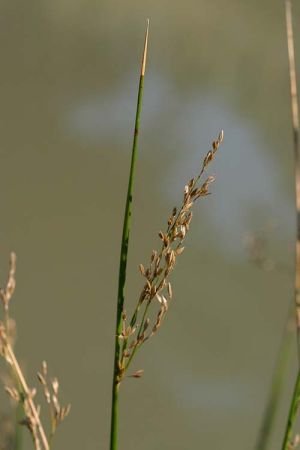Mexican rush facts for kids
Quick facts for kids Mexican rush |
|
|---|---|
 |
|
| Scientific classification | |
| Kingdom: | |
| (unranked): | |
| (unranked): | |
| (unranked): | |
| Order: | |
| Family: | |
| Genus: | |
| Species: |
J. mexicanus
|
| Binomial name | |
| Juncus mexicanus (Willd.) ex. Schult. & Schult.f.
|
|
The Mexican rush (scientific name: Juncus mexicanus) is a type of plant from the rush family. You can find it growing naturally in the southwestern parts of the United States, and in some areas of Mexico, Central America, and South America. This plant loves wet places and can grow in many different environments, like along the coast, in deserts, or even up in the mountains. It doesn't matter if it's a low or high place, as long as it's moist!
What Does the Mexican Rush Look Like?
The Mexican rush is a perennial plant, which means it lives for more than two years. It's a type of herb (a plant without a woody stem). It grows from rhizomes, which are underground stems that help the plant spread.
Stems and Leaves
This plant can look a bit different depending on where it grows. Its thin, straight stems can be anywhere from 10 to 80 centimeters tall. That's like the length of a ruler up to almost a meter! The leaves grow from the bottom of the stem and can be longer than 20 centimeters.
Flowers and How They Grow
The flowers of the Mexican rush usually grow from the side of the stem, not from the very top. They grow on long stalks called peduncles. Each flower has thick parts called tepals, which are like petals and sepals combined. These tepals have stripes that can be bright or dark in color.
Inside the flower, there are six stamens, which are the parts that make pollen. These stamens have very large anthers (the tips that hold the pollen). The flowers also have long stigmas, which are the parts that receive pollen. Sometimes, scientists think this plant is a type of Juncus arcticus or Juncus balticus.

